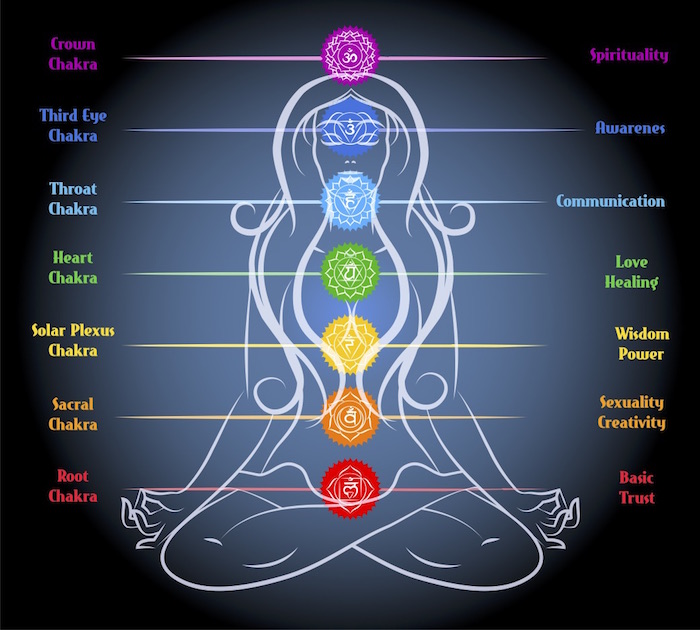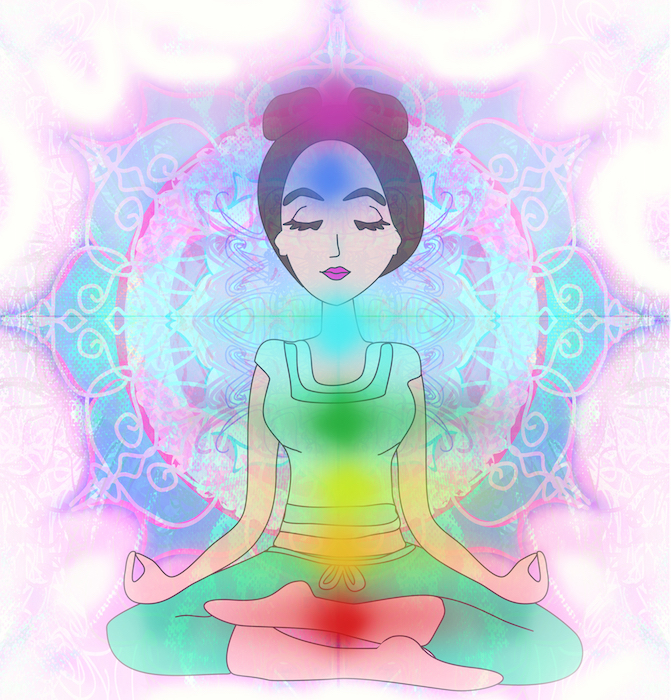What is a Chakra?
Chakras, by definition, are energy centers within the human body that help to regulate all its processes, from organ function to to the immune system and emotions. Seven chakras are positioned throughout your body, from the base of your spine to the crown of your head. Each chakra has its own vibrational frequency, color, and governs specific functions that help make you, well, human.
Before we define chakras and explore the meaning of each, it is essential to understand one thing: You are energy. All living things are created by and comprised of energy.The ability of your energy centers to function optimally is what keeps you psychologically, emotionally, physically, and spiritually balanced.

The term chakra is Sanskrit for “wheel.” Rightfully so, chakras are regularly depicted as spinning, colored wheels of energy. For millenia, chakras have been recognized as essential to life.
Discussions about chakras originate in India around 1,500 B.C. and there is also mention of them in the Yoga Sutras of Patanjali, dating to circa 200 B.C. However, the West didn’t hear much about chakras until the subject was introduced by Sir John Woodroffe (aka Arthur Avalon) in the early 20th century.
When exploring the chakras, it’s best to start at the beginning. Below is a list of each chakra, starting with the base of the spine and moving up. Given is the chakra name, location, color, and function.

Anytime a chakra becomes blocked, underactive or overactive, it can throw you off balance physically, emotionally, mentally, and spiritually.
For instance, if you have ever experienced persistent trouble expressing yourself, felt like you’re walking around in an emotional “fog,” or suffered through several bouts of laryngitis or sore throats these are all signs you may have an imbalanced throat chakra.
Generally speaking, when chakras are “off,” the body is excellent about communicating what ones are affected. When you consider all the signs you are experiencing, be they physical or not, odds are they’re centered around the area of the affected chakra.
To restore balance to the chakras, cleansing is needed.
In order to restore positive balance to the affected energy center, the entire blockage and/or negativity must be removed. The most common method to balance chakras is energy healing, which can include:
Another common form of energy healing is the use of healing stones.
Chakra healing stones are each colored to correspond to individual chakras. Cleansed and charged prior to use, the seven stones are laid upon the body’s energy centers. Each stone possesses a vibrational frequency that matches that of chakra over which it is placed. As the chakra absorbs the stone’s frequency, its balance is restored.
When properly balanced each of your 7 Chakras work together to create an optimal life. If you are like most of us your energetic ecosystem could use some help. Take this 2-minute chakra test to know which of your chakras may be the weakest.
Lizzy is editor in chief of Chakra Magazine and chakras.info. She is trained in several energy healing modalities including Reiki and Healing Touch. In addition she has spent many years studying ancient traditions such as the chakra system and Tibetan spirituality. She merges this knowledge with her passion for sharing information through journalism. Her mission is to offer accurate, up-to-date, reliable resources about topics that matter to readers with regards to the chakra systems.